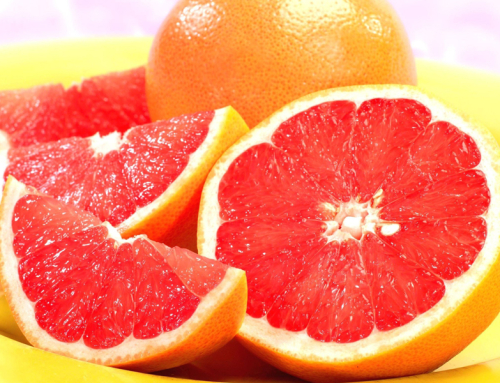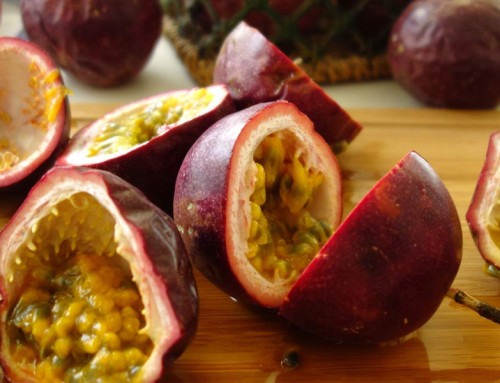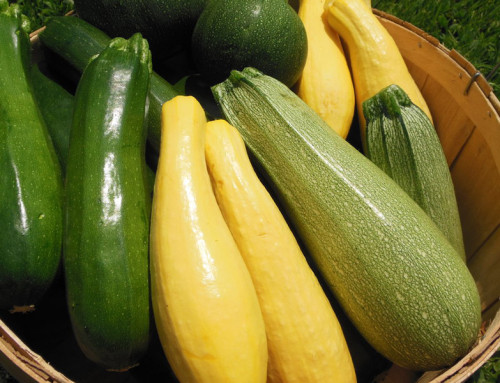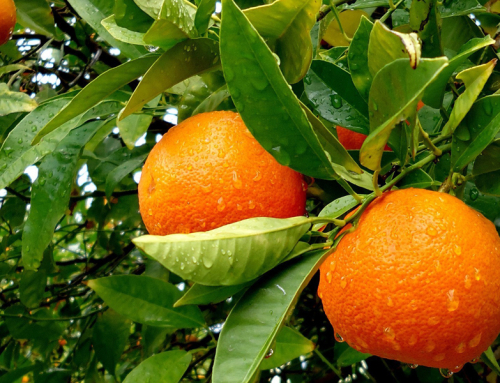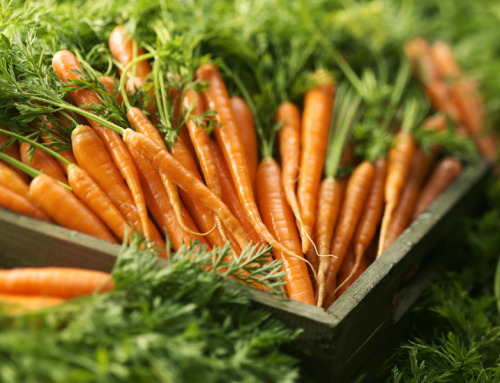- Generic Cabbage, shredded, raw, 1 cup (approx. 70 g) – 18 calories
- Generic Cabbage, shredded, cooked and drained, 1 cup (approx. 150 g) – 33 calories
- Red Cabbage, raw, shredded, 1 cup (approx. 70 g) – 19 calories
- Savoy Cabbage, raw, shredded, 1 cup (approx. 70 g) – 19 calories
- Pak choi or bok choy cabbage, cooked and drained, 1 cup (approx. 170 g) – 20 calories
- Pe tsai cabbage, cooked and drained, 1 cup (approx. 179 g) – 17 calories
Green Cabbage
Green cabbage is the most commonly eaten variety of cabbage world-wide. Fresh, dark green-leafy cabbage is incredibly nutritious for the low calories that it provides. The cabbage that we know today was developed from wild cabbage, a vegetable that was closer in appearance to collards and kale since it is composed of leaves that do not form a tight ball, or head.
White Cabbage
White cabbage is a very lightly-colored form of green cabbage and the most commonly eaten variety of cabbage in the U.S.
Red Cabbage
Red cabbage has a hearty flavor. The rich red color is due to the concentration of anthocyanin polyphenols, which give red cabbage significantly more protective phytonutrients than green cabbage. Anthocyanin pigments are dietary antioxidants, as well as anti-inflammatory, and they may provide protective, preventative, and therapeutic aids in many diseases.
Napa Cabbage
Napa cabbage is a milder tasting variety that contains the highest concentration of folate. It is so low in calories that it fits into the neo-class of zero calorie or negative calorie vegetables, which means that it takes more calories to digest it than you get from it. Some common names of napa include pe-tsai, celery cabbage, Chinese white cabbage, Peking cabbage, won bok, nappa (Japanese), hakusai (Japanese), pao, and hsin pei tsai.
Bok Choy
Bok choy has a milder, sweet, succulent flavor than regular cabbage and is the #1 vegetable in China. It has leafy nutritious stalks that grow upright from the ground with smooth white romaine lettuce-like stalks, which spread at the end to oval or round glossy green leaves that may reach 12-18 inches in length. Bok choy has a higher concentration of beta-carotene and vitamin A than any other variety of cabbage. It is also one of the negative calorie vegetables. Other common names include pe-tsai, pak choi, petsay, white-celery mustard, and Chinese white cabbage.
Savoy Cabbage
Savoy cabbage leaves are more ruffled and are yellowish-green in color. Red and green cabbage have a more defined taste along with a crunchy texture, while the Savoy cabbage is a more delicate flavor.
Brussels Sprouts
Brussels sprouts resemble miniature cabbages, with a 1 inch diameter. They grow along a 3 foot stem in bunches of 20 to 40. They are usually a sage green in color, although some varieties have a red hue.
Swamp Cabbage
Swamp cabbage refers to the Symplocarpus foetidus or eastern skunk cabbage that grows in soft wetland soils, bogs, swamps, and is often cultivated in water gardens. It has an unpleasant skunk-like odor when the leaves are broken or torn. It has been used as a medicinal plant for treating respiratory illnesses, nervous disorders, rheumatism, and dropsy. Native American tribes also used it as a seasoning, and magical talisman. The western skunk cabbage from the genus Lysichiton is often confused with eastern skunk cabbage. Swamp cabbage is not considered to be edible in its raw form due to roots and leaves that contain calcium oxalate crystals that can cause intense burning of the mouth, but young leaves may be thoroughly dried and then used in soups and stews. Only drying removes this property, boiling does not. Thoroughly dried rootstocks can be made into a pleasant cocoa-like flour. Cordage can also be made from the fibers in the stem. It is not a true cabbage.
- Cabbage can provide cholesterol-lowering benefits if steamed. The fiber-related components bind with bile acids in your digestive tract and the result is lowering your cholesterol levels. Raw cabbage still has cholesterol-lowering ability, just not as much as when they’ve been broken down by steaming.
- Cabbage is not a fatty food but within the small amount of fat it contains, is an omega-3 fatty acid called alpha-linolenic acid, or ALA. There is more ALA in 100 calories of cabbage than there is in 100 calories of salmon. The amount of total omega-3s in cabbage (520 milligrams) is also surprisingly high even when compared to salmon (798 milligrams) for the same 100 calories.
- Cabbage is a unique source of several types of phytonutrients for a rather unusual polyphenol content. With red cabbage, these polyphenols include antioxidant and anti-inflammatory compounds called anthocyanins.
- The total antioxidant strength of green cabbage (ORAC value) is 508 µmol TE/100 g. Red cabbage has the highest antioxidant value of all the cabbages at 2252 µmol TE/100 g due to the higher polyphenol and anthocyanin content.
- Cabbage is rich in the essential B-vitamin complex such as pantothenic acid (vitamin B-5), pyridoxine (vitamin B-6) and thiamin (vitamin B-1).
- Cabbage is am excellent source of vitamin C. 100 g of fresh cabbage contains vitamin C with 36.6 mg and provides about 63% of the recommended daily intake. The vitamin C in red cabbage is six to eight times higher than that of green cabbage. Avoid buying pre-cut cabbage, since once cabbage is cut, it begins to lose its vitamin C content. If you need to store a partial head of cabbage, cover it tightly with plastic wrap and refrigerate. Since the vitamin C content of cabbage starts to quickly degrade once it has been cut, you should use the remainder within a couple of days.
- 100 g of fresh bok choy is even higher in Vitamin C and provides 45 mg or 75 % of the daily requirements. Vitamin C is an important antioxidant and immune system supporter.
- Bok choy contains more vitamin A, carotenes, and other flavonoid polyphenolic anti-oxidants than cabbage, cauliflower, etc. Just 100 g provides 4468 IU or 149% of daily-required levels vitamin A when eaten raw.
- Fresh cabbage contains an adequate amount of potassium, iron, manganese and magnesium.
- Cabbage is a very good source of vitamin K and provides about 63% of the recommended daily intake.
- A 100 gram serving of raw red cabbage contains 196.5 milligrams of polyphenols, of which 28.3 milligrams are anthocyanins.
- A 100 gram serving of raw green cabbages contains 45 milligrams of polyphenols, of which 0.01 milligrams are anthocyanins.
- Cabbage is unique for it rich supply of glucosinolates. These are phyto-nutrients that can be converted by the body into isothiocyanates that have special detoxification and anti-cancer properties
- Cancer prevention is the top health benefit of cabbage. The uniqueness of cabbage in cancer prevention is due to the three different types of nutrients: antioxidants; anti-inflammatory traits, and glucosinolates.
- Different types of cabbage (red, green, and Savoy) contain different patterns of glucosinolates, so your best benefits come from including all cabbage varieties in your diet.
- Cabbage contains a wealth of phyto-chemical anti-oxidants such as thiocyanates, indole-3-carbinol, lutein, zea-xanthin, sulforaphane, and isothiocyanates that are known to help protect against breast, colon, and prostate cancers and help reduce LDL or “bad cholesterol” levels in the blood.
- Cabbage in general, but especially Savoy, is an especially good source of sinigrin, a glucosinolate that has received special attention in cancer prevention research. It can be converted into allyl-isothiocyanate, or AITC and this compound has shown unique cancer preventive properties against bladder cancer, colon cancer, and prostate cancer.
- Steaming cabbage is better for your health than microwaving. Two minutes of microwaving destroys the same amount of myrosinase enzymes as seven minutes of steaming. This is extremely important because myrosinase enzymes help convert the vegetable’s glucosinolates into cancer-preventive compounds.
- Steamed cabbage and raw cabbage are the only ones that show cancer-preventive benefits. Cabbage that has been “long-cooked” or boiled, has failed to demonstrate any measurable benefits.
- Cabbage juice is well known for helping heal stomach ulcers (called peptic ulcers), and cabbage, in general, is beneficial to the stomach and intestinal linings thanks again to the glucosinolates and the anti-inflammatory isothiocyanates derived from them. These benefits include regulation of bacterial populations of Helicobacter pylori that naturally inhabit the stomach.
- Cabbage is the main ingredient for a popular fast weight-loss fad diet that came out in the 1980’s. [See: “Cabbage Soup Diet” for more information.]
Cabbage belongs to the “Brassica” family of cruciferous vegetables, that also includes Brussels sprouts, collard greens, cauliflower, bok choy, kale, and broccoli. It is one of the most widely cultivated crops world-wide. It has a round shape and is composed of superimposed leaf layers that are tightly packed together, as opposed to lettuce, which is loosely packed.
Russia, Poland, China and Japan are currently some of the leading producers of cabbage.
Health Alert: Like other Brassica family vegetables, cabbages contain chemical compounds known as “goitrogens.” Prolonged consumption of these vegetables may cause swelling of the thyroid gland, which can produce a condition known as goiter. It is therefore advised that people with a thyroid dysfunction not eat cabbages. However, they may be used in moderation by healthy individuals.


